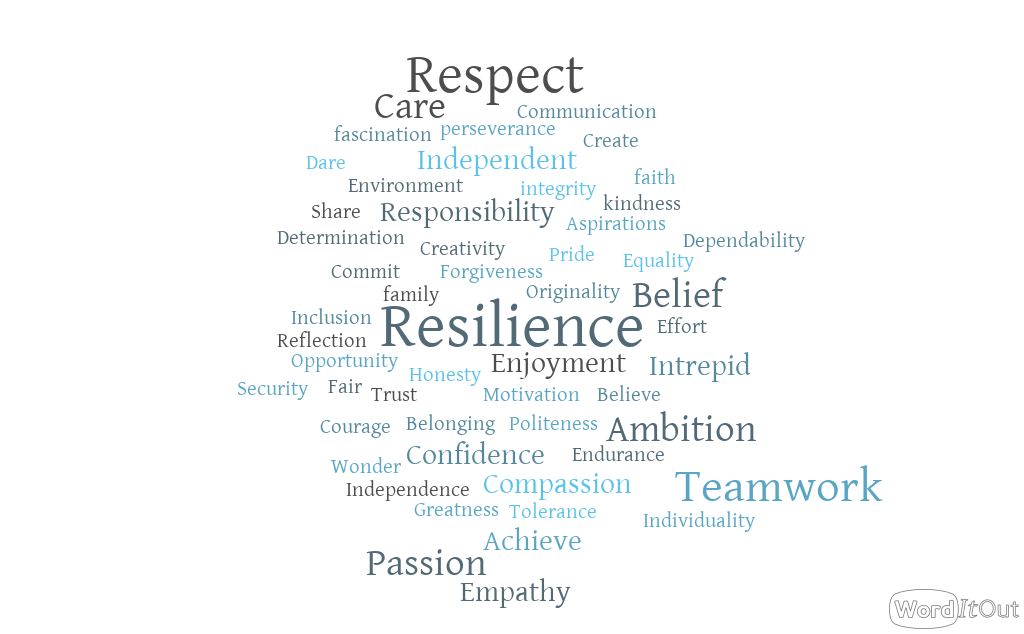Effectiveness without values is a tool without a purpose.
Edward de Bono Tweet
Every school has its own culture which is expressed in the form of the values that they expect the staff, students, and leaders to learn and show. But too often they are chosen because they sound good, or they suggest a strong moral purpose and are ideals that everyone should believe in.
Schools spend a lot of time writing, debating and occasionally revising their value statements. They want something concise and meaningful that everyone can get behind. A unifying statement of intent that gives purpose to the education that they deliver. Value statements are the “Why” of the school.
Make it mean something
Most value statements are bland, toothless, or worse, dishonest. A thought which is very depressing. Empty values statements can seriously damage the culture that you are trying to build. They undermine your why and create a cynical staff that question your credibility.
This is a real shame because it is a wasted opportunity to set your school apart from the others, give it a real identity and become a manifesto and mantra to inspire and motivate every member of your school community.
Creating a strong values statement is hard, and it should be because it has to reflect the true character of the community. It has to be something that requires total commitment and it must be something that you are ALL held accountable to. This takes courage and can be painful because leaders can leave themselves exposed to criticism.
If you are not prepared to live by the values in everything you do, then don’t include them in your statement.
What is at the core?
Value statements are not an opportunity to express a wish-list of things that you want for children, they must be underpinned by a core of values that guide all of your actions, they are a cornerstone of the culture that you want to engender. They are sacred and can never be compromised for expediency or convenience.
That is not to say you can’t have aspirational values, but they must not replace your core values. Aspirational values are those that are needed for future success, they are something that is currently lacking, something that needs developing, and as such are very difficult for everyone to live.
Values are a foundation of stone.
If values underpin the school culture, getting them right is a big deal. Clarifying them so everyone understands them is never a waste of time. Staff should be expected to behave according to them and promote them to the children. If they don’t understand them, or value the values, then the culture is built on sand, not stone.
Values act as a guide when difficult decisions need to be made, or when there is doubt about a course of action. If all staff can refer to the values of the school and understand them, it is much easier to make the right decision. This is not necessarily the easiest decision, which is why living them can be painful.
Shared values allow everyone to move in the same direction, towards whatever noble cause your school culture has identified as its priority. (Noble causes are a topic for another day). Publishing shared values for everyone to see and do can help reinforce the culture that you want to establish, however, there are things that need to be watched carefully.
Identifying the values of others.
Publishing the school values on the website and around the school gives everyone a script, which can lead to lip service. If you ask people what their values are, they can easily say what is expected of them without exposing their own values. People aren’t stupid and if the difference between getting a job or achieving something else is saying what you want to hear or not…
If you want to detect someone’s values, then you need to take the time to speak with them. Not interview them or quiz them, but engage in a conversation where you share your values. Tell a story that shows how you learned one of your core values, when you do so you encourage others to respond with stories of their own which will communicate a value that they have. This is often the same value, but not always.
Alternatively, if you are not a great story teller, a quick way of discovering values is to ask a simple question and then follow it up with some open-ended questions. For example. “What are you proud of?” Taking the time to explore why they are proud of the achievements that they list will expose their values. Why do they think the achievement is important? Why people do something helps you to see what they value.
Shared values are discussed
Leaders discuss their shared values with everyone in the school on a daily basis. They act on those values and behave in a way that reinforces those values. Behaviour and culture reinforce each other. Other members of the school start to discuss the values, they reflect on their actions. The values guide their thinking and their actions, their behaviour reinforces the culture. The values are lived by all.
Values are Tangible
One of the best ways to make sure that values are lived, it to make them tangible, something real that everyone can see, breathe, and feel. Environment is a huge part of this. It isn’t just a case of displaying the values as text on the walls, although there are good ways of doing this. If one of your values is teamwork, the environment has to be set up to encourage it. If a core value is passion corridors should be full of examples of work, celebrating the culture’s passion for the work being produced.
How is your school living it’s values?


